“Though not more than a thousand feet deep, Throrgrmir is a vast underground realm. Its eight major levels split into numerous sub-levels and spread across an area of at least five hundred square miles.1 Civilizations have dawned and died within its depths; empires built and crumbled over the long ages of its existence.”
Throrgrmir by Level
Transitioning from How to Host a Dungeon to D&D, strata become dungeon levels and rooms become areas, which are collections of natural caves or dungeon chambers. I placed each area on separate overhead maps by level. The rectangles show the general location of each area, color coded as per the cross-section maps.
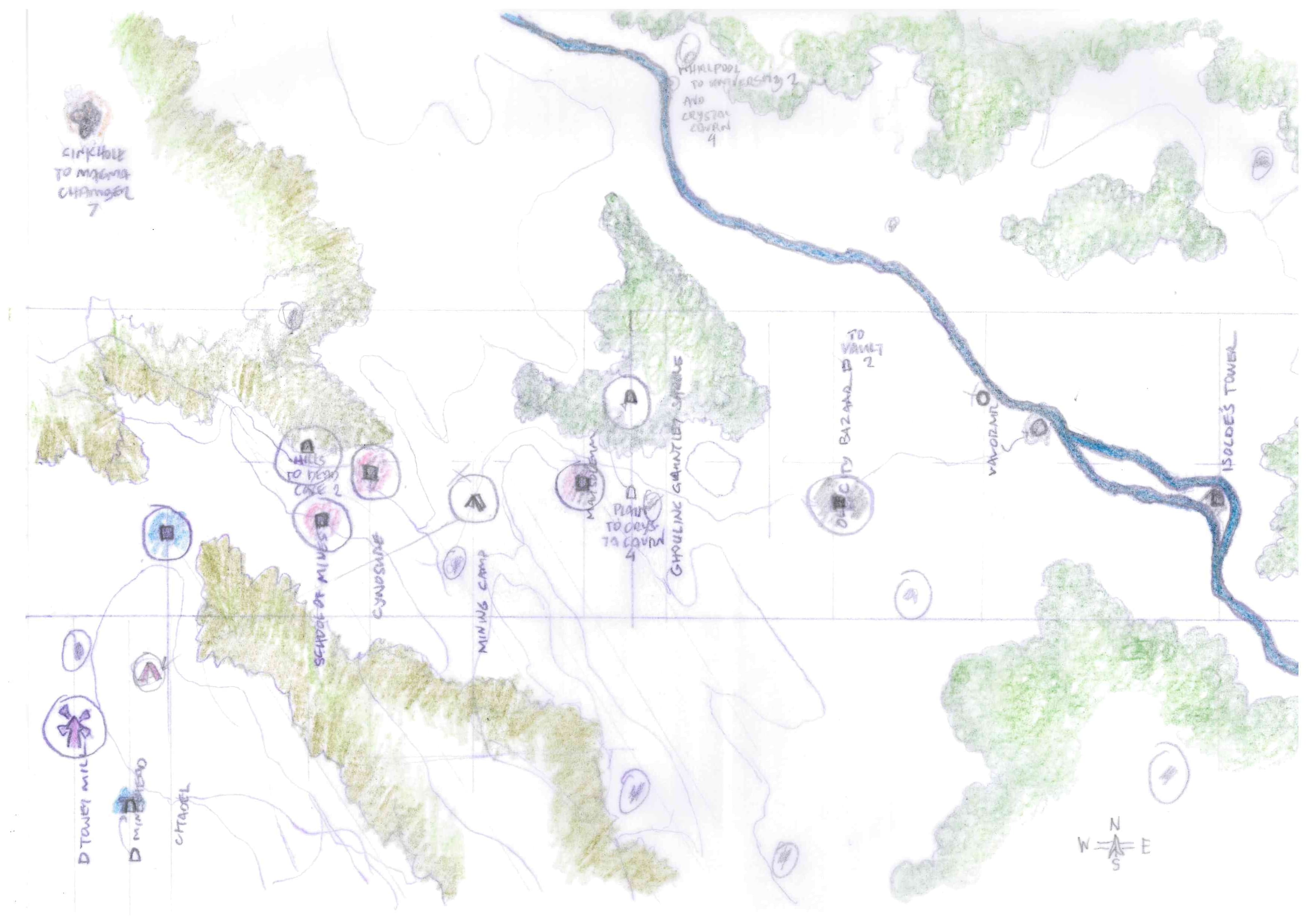
Surface.
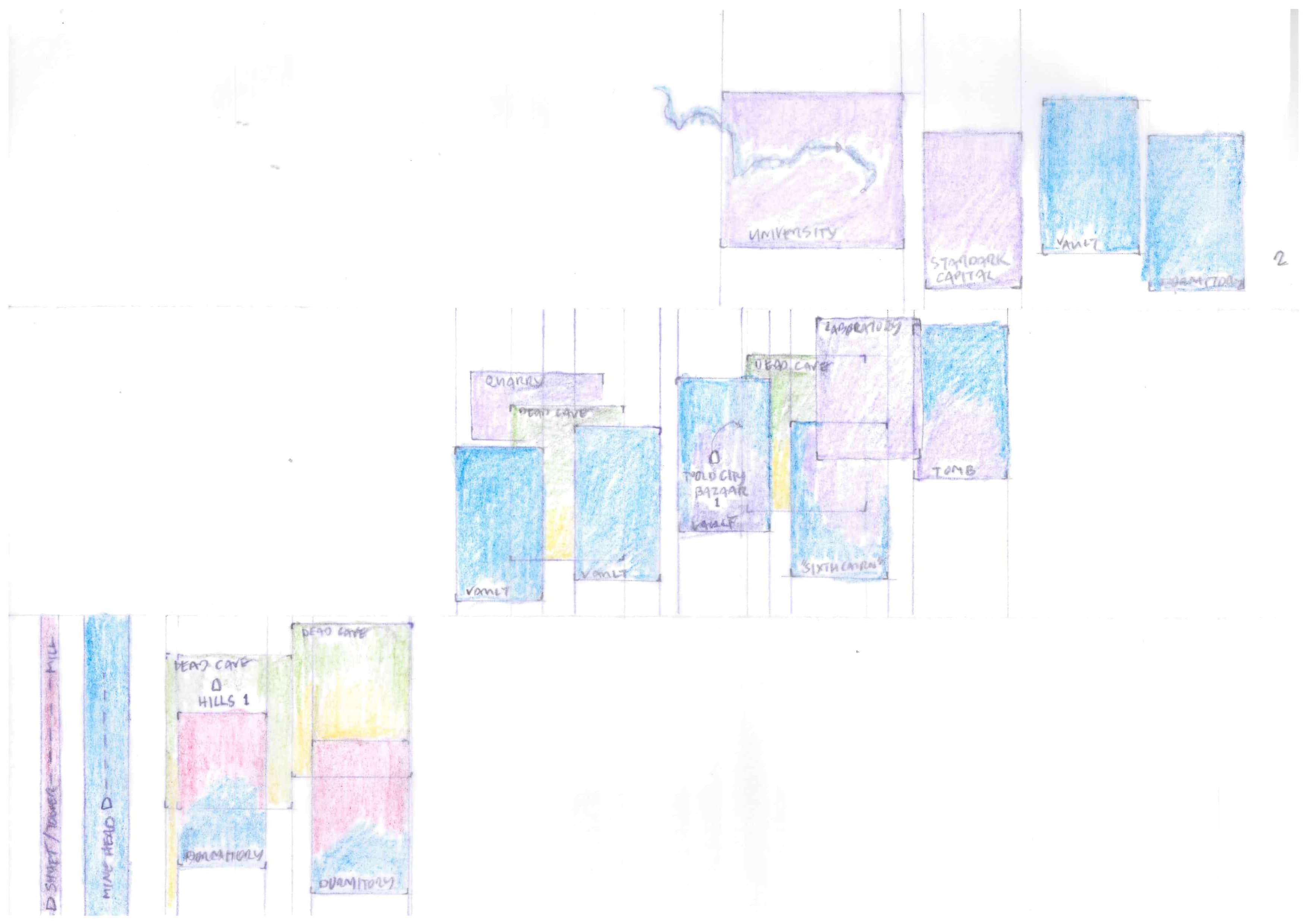
Dead Caves.
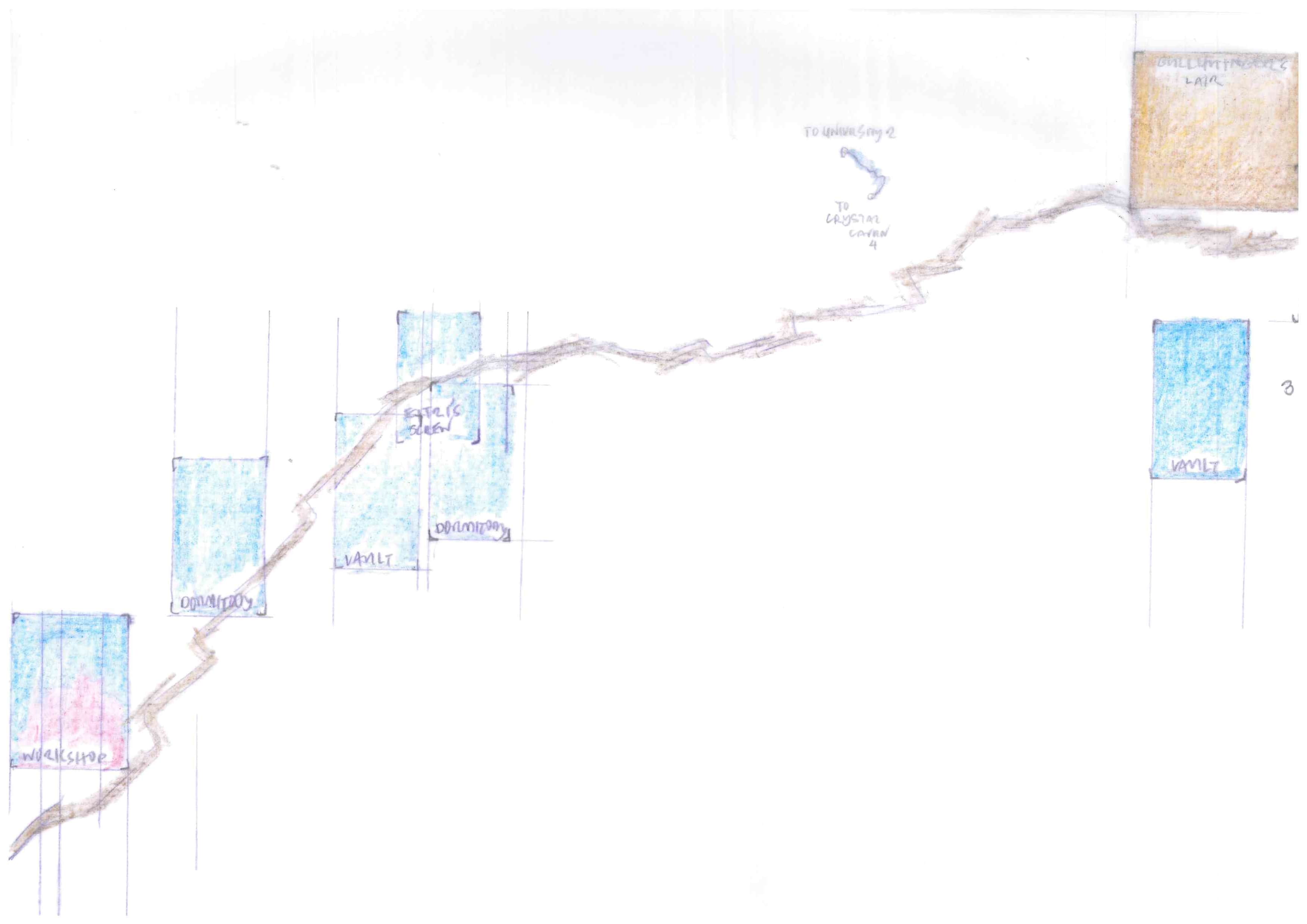
Gold Vein.
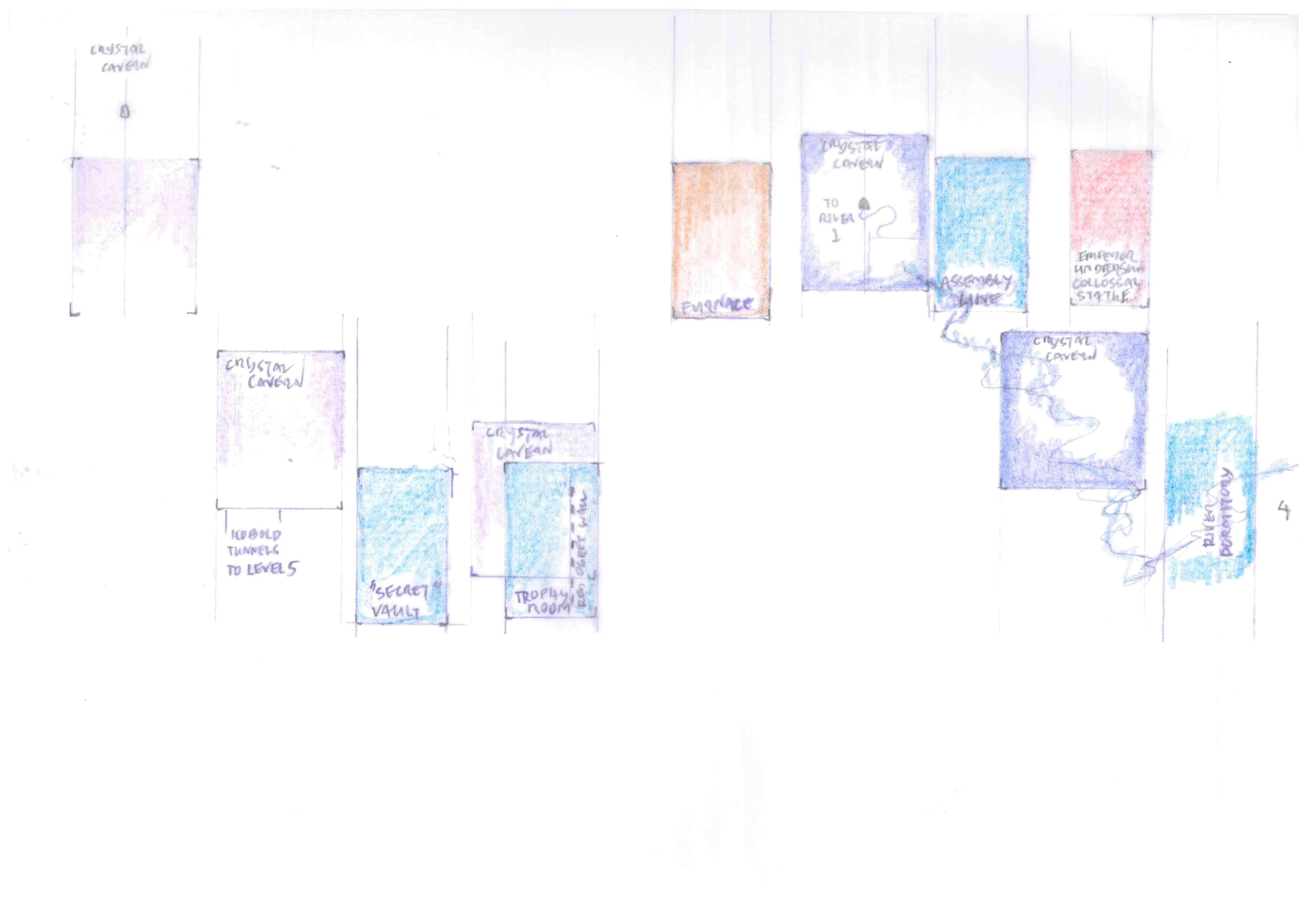
Crystal Caverns.
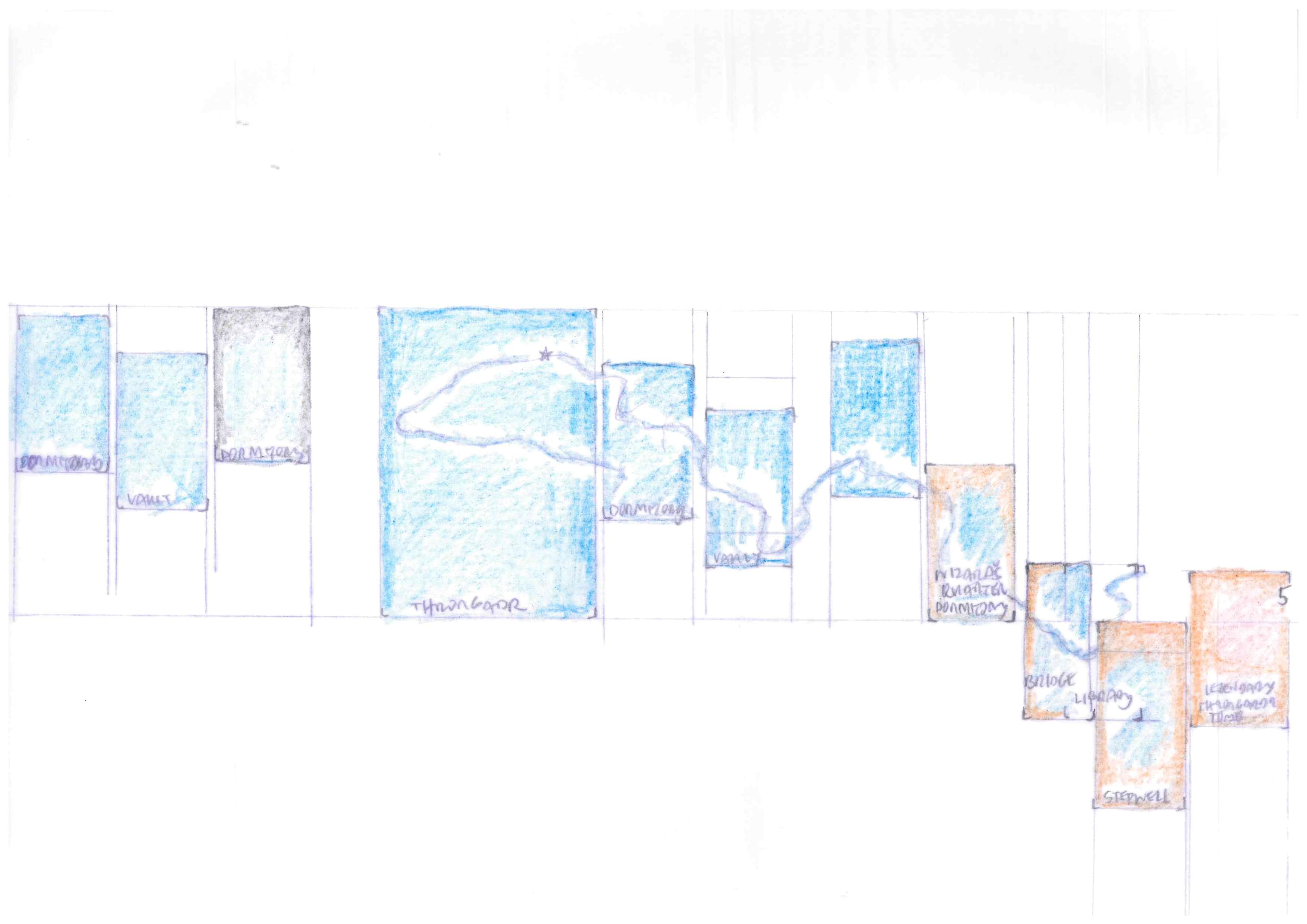
Subterranean River.
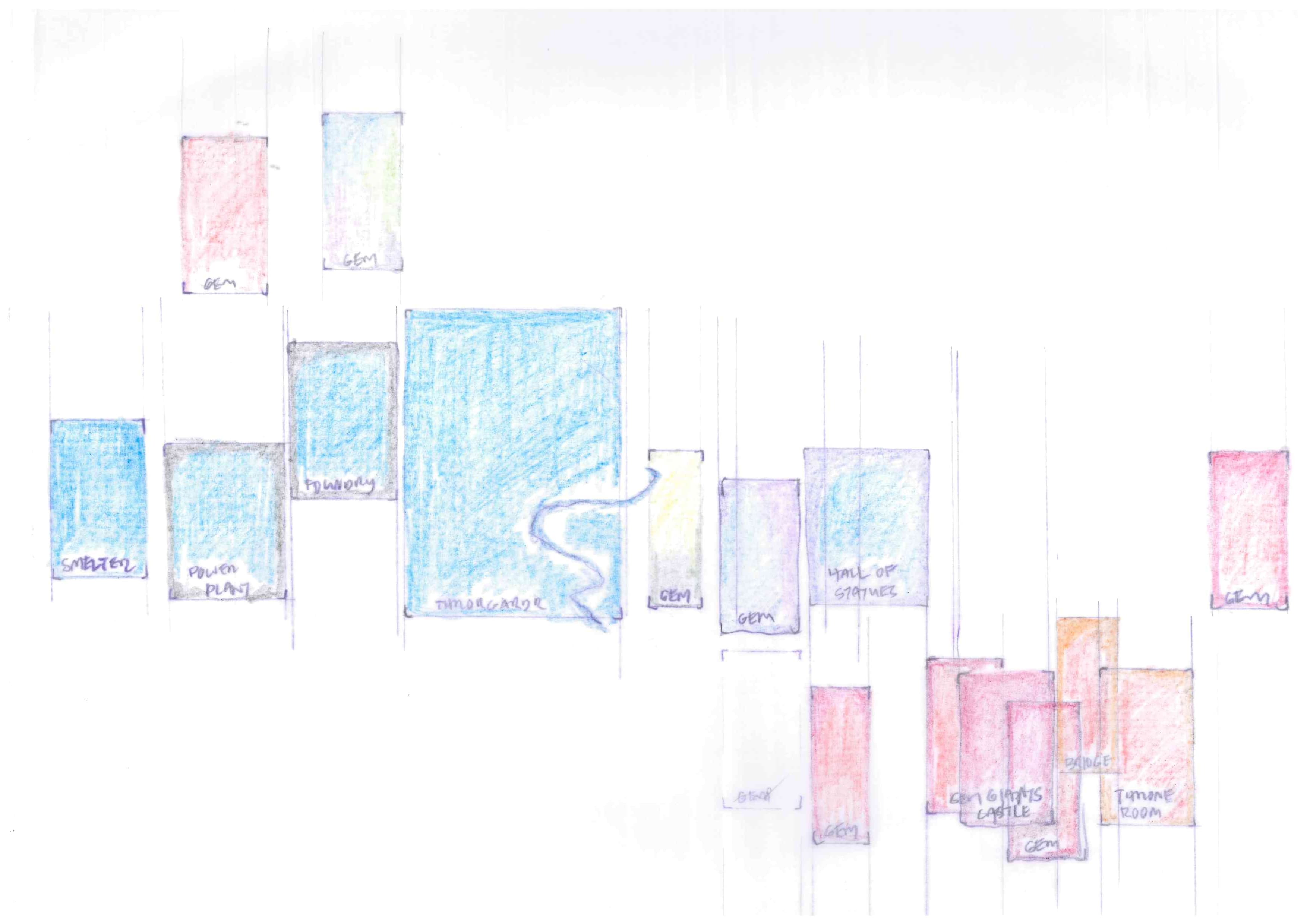
Gem Deposits.
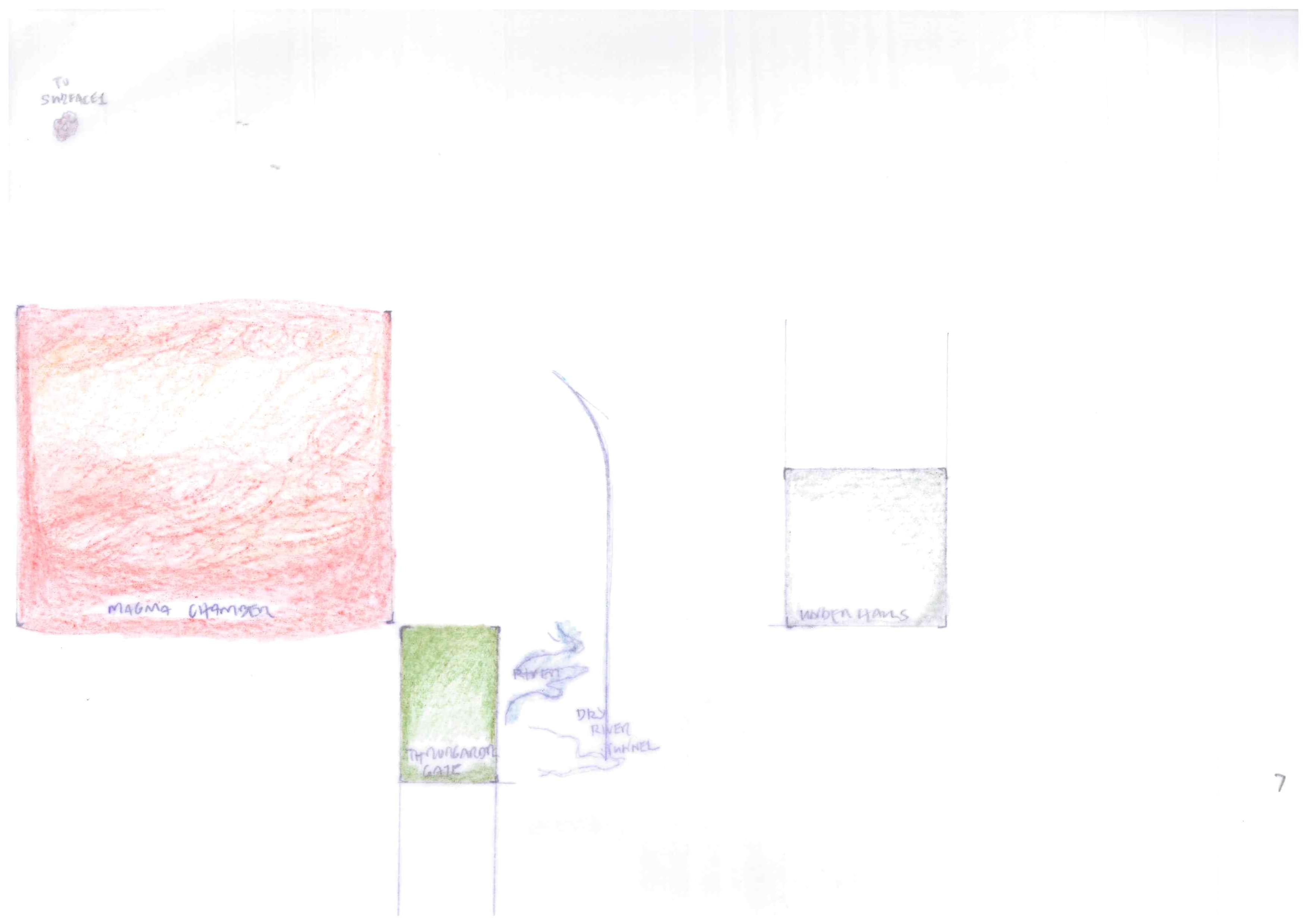
Magma Chamber.
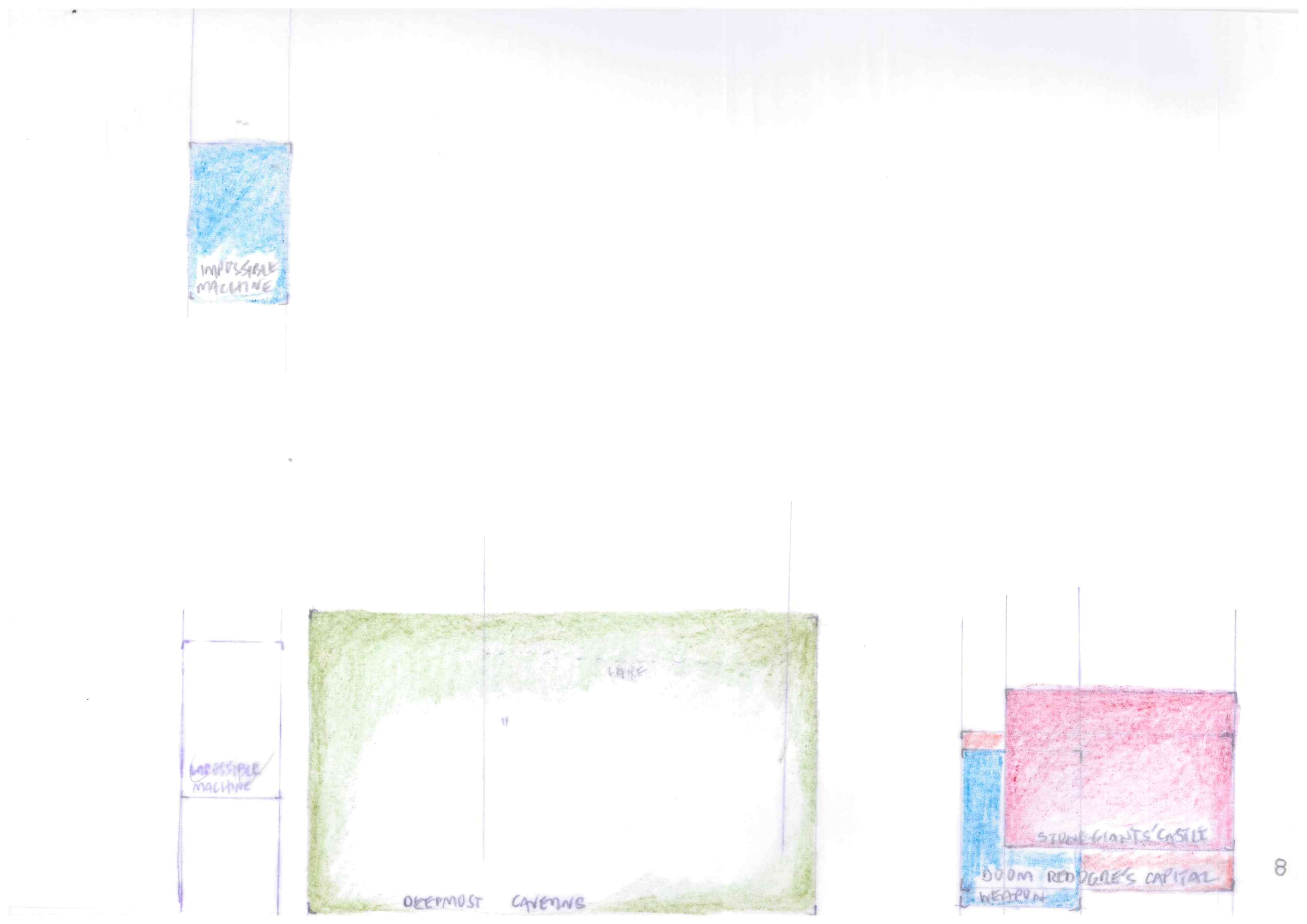
Deepmost Cavern.
Connecting Corridors
At two miles per inch, each level map covers an area 15 by 23 miles. Even areas in close proximity to each other are separated by a third of a mile or nearly 600 yards. If we allow travel along connecting corridors at the wilderness rate (where movement is measured in yards), metal-armored adventurers traverse the distance in ten turns, which, with rests, is two hours.
Not rare, though, are areas separated by a mile or four. No mere jaunt, a delve into the Throrgrmir dungeon is an expedition.
I’ve never been much for dungeon adventures lasting more than a single day. That adventurers might hunker down in a cold, damp, dangerous place—no matter how empty the room—and get several hours’ sleep to regain spells strains plausibility. That they might “do nothing but rest” (B19) for 24 hours straight to restore hit points even more so.
On the other hand, “Throrgrmir is a vast underground realm,” as Eskilsson writes. Civilizations and empires have spent countless cozy nights within its confines. With a little thought, we ought to be able to accommodate explorers on long underground forays. Furthermore, the constraint may serve to further develop the setting. Following are a few considerations.
Wandering Monsters
The long corridors may be patrolled by local denizens or imperial troops. But, as a general rule, fewer monsters wander in the connecting corridors. We might check for wandering monsters once per hour.2
Movement
Mentioned above, a party may move along connecting corridors at the wilderness rate. Generally straight passages, with few turns and hardly an intersection, give little reason to tarry. Apart from lurkers and well-hidden predators, most encounters will be met from the rear, if some creature overtakes the party, or, more likely, from the front.
Again, infrequent wanderers is a general rule. Particular corridors may break it. A party may chose to move at dungeon or wilderness speed, switching between as deemed necessary.
Dungeon Marks
The dwarf builders carved distance3 and destination in corner stones at the entrances to connecting corridors. Some of these stone blocks have been defaced. Other builders, denizens, and explorers left similar information, sometimes carved in blocks, sometimes with less durable means. Faded chalk marks are not uncommon. Whatever the media, these signs are called “dungeon marks.” Sometimes the information is correct.
Burden of Treasure
If spells and hit points are husbanded, a party may well become loaded with treasure within a score of turns.
“If the DM permits it, mules may be taken into dungeons” (B39).
A pack animal permits the acquisition of 4000 additional coins.
Trading Outposts
Traders (B43) often set up outposts near first level entrances to the lower levels. Treat an outpost as a trader lair. Traders may be accompanied by mules in the dungeon as in the wilderness. In addition to goods needed by dungeon denizens, traders deal in weapons, armor, and adventuring equipment. Outposts are established on high-traffic routes in defensible positions and are appropriately guarded.
Overnight in the Dungeon
Way Stations
Dwarf-built stretches of the connecting corridors are often punctuated with bypasses, alcoves, or the odd room or two. In some of these, the Sadhakarani nomads established way stations. Since the nomads’ recent eradication by the Red Ogre, it remains to be seen whether the stations will be maintained.
“Wandering Monsters… should not be frequent if the party spends a long time in one out-of-the-way place (if they stop in a room for the night, for example)” (B53).
Let’s say, one check per night or three checks per day (one every eight hours) while so resting at a way station or other such place, including in a remote room of a dungeon area.
Throrgrmir Enclave
Dwarves maintain an enclave in an old dormitory on the second level. From this base, they explore the dungeon, searching for Throrgrmir relics. Law-abiding persons are welcome to stay, for a price, in a boarding house, provided they make no trouble and stay out of the dwarves’ way and their business. Here, a party may rest to regain spells and recover hit points with little chance for interruption.
Sixth Cairn Protectorate
The Red Ogre recently established a “protectorate” in the former drinking hall below Troelsvollr. Governed by a Lord Protector and guarded by imperial troops, it aspires to become a city.
Notes
1 Eskilsson overestimates. The dungeon’s footprint covers 345 square miles. On the other hand, if we multiply by eight levels and assume one-fifth of the area is explorable dungeon (as opposed to solid rock), we arrive at a figure not far from the historian’s mark.
2 Within dungeon areas, normal chances for wandering monsters apply.
3 Throrgrmir dwarves measure distance in the length of their standard stone block. A dwarven “standard” is roughly equal to five feet.
Pingback: Prelude to Wyrmwyrd – DONJON LANDS
Pingback: Valormr and Environs – DONJON LANDS